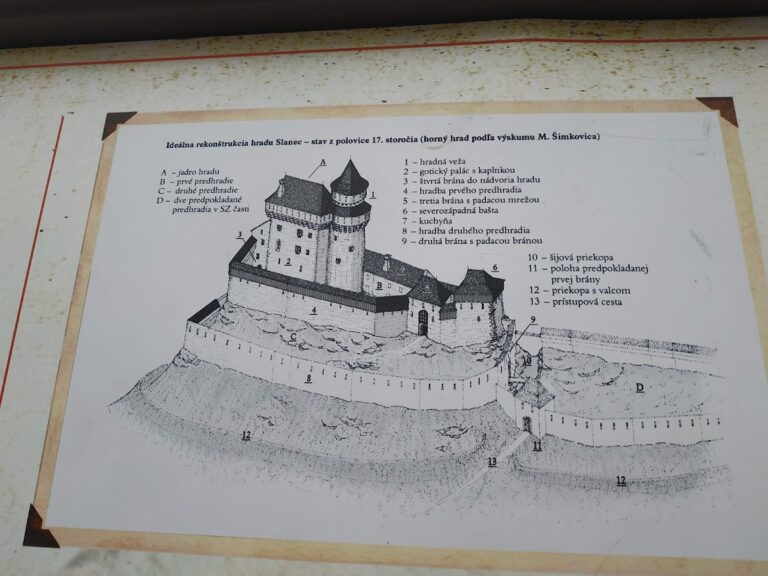Veľký Kamenec Castle: A Historic Fortress in Slovakia
Visitor Information
Google Rating: 4.6
Popularity: Low
Google Maps: View on Google Maps
Country: Slovakia
Civilization: Unclassified
Remains: Military
History
Veľký Kamenec Castle is situated in the village of Veľký Kamenec, in present-day Slovakia. It was built by local nobility during the era following the Mongol invasion of Central Europe, which significantly shaped defensive architecture in the late 13th and early 14th centuries.
The earliest records indicate that the surrounding estate belonged to Matthias of the Ratold family in 1283. By 1288, ownership passed to the Bokš family, who, in 1323, undertook the division of their property. This event marks the first known mention of the castle itself, suggesting its establishment in this early period of feudal consolidation. The castle likely began as a fortified residence centered around a tower, designed to oversee and protect the surrounding lands.
In the 15th century, Veľký Kamenec Castle gained military significance. By 1438, documents confirm the presence of a tower. During the turbulent middle decades of the century, the castle became embroiled in regional conflicts. In 1451, it fell into the hands of Ján Jiskra, a mercenary captain who used the stronghold as a base to launch raids throughout the area. The strategic importance of the castle was further underscored in 1458 when royal forces recaptured it. That same year, Veľký Kamenec served as the site for a peace treaty between Ján Jiskra and Ján Hunyadi, a prominent Hungarian military leader, highlighting its role as a center for diplomatic as well as military affairs.
Following these events, in the late 15th century, the Soós family, who had taken possession of the estate, initiated extensive repairs and significantly enhanced the castle’s defenses. These improvements reflected the evolving needs of warfare and the desire to fortify the site against future challenges.
In the 17th century, during the Vesselényi uprising—a noble-led rebellion against Habsburg imperial authority—Juraj Soós, the castle’s then-owner, actively participated in the revolt. This resistance led to a decisive response: imperial troops destroyed Veľký Kamenec Castle in 1672. Since that time, the castle has remained largely in ruins, ending its role as a military and noble residence.
Remains
Veľký Kamenec Castle was originally arranged on a roughly triangular plan, adapted to the contours of the highest point of the hill it occupies. The initial stronghold centered around a main tower surrounded by defensive walls. In the 15th century, the castle’s layout was significantly transformed, introducing rounded and polygonal bastions at its corners. These bastions, projecting structures designed for mounting artillery and facilitating defense, represented the latest advances in fortification techniques of that era.
The surviving structures include several sections of the outer walls, notably a polygonal corner bastion characterized by its distinctive angular shape. This bastion, along with connected fortress walls, preserves openings for cannons and windows, indicating its use for active defense as well as habitation. Adjacent to these, a heavily damaged round artillery bastion remains visible, marking the castle’s adaptation to the gunpowder age.
The castle ramparts descend the slope below to a church, which is thought to have been integrated into the original complex, possibly serving religious functions for the castle’s inhabitants and retainers. Within the former courtyard, a cistern carved directly into the stone bedrock is clearly identifiable. This cistern would have collected and stored water, an essential feature for sustaining those within the fortress during sieges or times of isolation.
Today, the ruins stand as testament to the castle’s layered history of construction, warfare, and eventual destruction, preserving its most defensible elements and offering insight into medieval fortification methods in the region.










